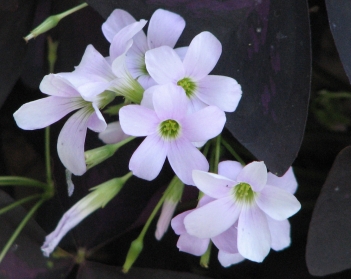Viburnum; Rusty Blackhaw Viburnum Viburnum rufidulum Raf;. A small, understory, evergreen tree with cubed, but not ridged, corky bark, V rufidulum yearly produces new sprigs of glossy green, oval leaves with a very finely toothed margin, arranged in opposite pairs along the stems, completely lacking any drip-tip. New stems, often long arching suckers off of the main trunk and branches, have a slight layer of rusty colored fuzz, giving the plant its descriptive name. Panicles of small, white, tube flowers that are mildly fragrant, bud from the ends of new growth. The short tube ends in a corolla of 5 petals, with five white stamen, each tipped with a yellow anther, protruding beyond the profile of the flower, giving the bunches a slightly fuzzy look. The fruit are oblong, dark blue drupe with a single seed. Viburnum cultivars are popular in hedges, both for their yearly bloom of large, showy bunches of white flowers, and their glossy, evergreen foliage. (957-958) 3/30 – 4/15/15; 3/15 – 4/5/16; 3/22/17 – 4/7/17; 3/28/18; 19 no obs; 3/25/20;

Note; terminal bunches of white tube flowers that unfold into a corolla with 5 petals, the white stamen tipped with yellow anthers protrude beyond the profile of the flowers, giving the bunches a fuzzy look

Rusty Blackhaw habit; an evergreen, understory shrub with dark, corky bark, glossy foliage, and showy bunches of white flowers that convert to oblong blue drupes
Note; the dark bark is corky and divided into cubes, not furrowed ridges.

Note; bright, evergreen, glossy, oval leaves with very fine serration along the margins, are arranged in opposite pairs along stems, completely lacking any drip-tip


































